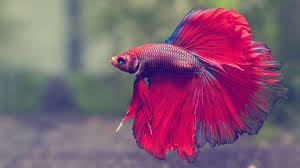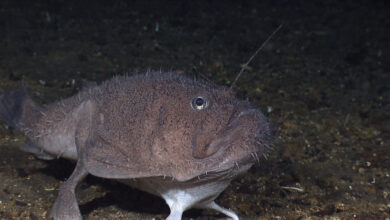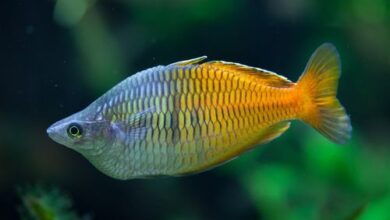An In-Depth Guide to Betta Fish Care-Siamese Fighting Fish

FAQs About Fighting Fish
Why is the betta called a fighting fish?
In the late 19th century, wild-caught male bettas were staged in gladiator-style fights for entertainment in their home countries, becoming known as “fighting fish”. This aggression reputation remains, though pet bettas rarely fight outside mating rituals and social sparring in the wild serves to communicate rather than harm.
Why do betta fish fight?
In nature, male bettas flare their fins and spar primarily for visual communication and establishing territories/social hierarchy. They rarely cause serious injury. However, confined domestic settings may trigger territorial instincts if multiple males encounter each other in close quarters. This differs from the peaceful coexistence of wild males from separate distances and habitats.
Is a betta fish good for a home aquarium?
Yes, bettas make wonderful home aquarium fish! As long as their basic care needs are met with a properly cycled 5-gallon minimum tank, gentle filtration, heating to 78-82°F, regular water changes, and varied nutritional feedings, they thrive as low-maintenance desktop pets. Their interactive natures and beautiful colors/fins create a calming, anxiety-reducing presence for many owners. With care, bettas reward keepers with personalities and multigenerational longevity.
Do betta fish fight female bettas?
Generally, no, as mature female bettas are far less likely than males to engage in territorial aggression. However, in confined improperly sorority tanks, occasional squabbles may ensue until a social order stabilizes. Always properly introduce new sorority members in neutral floating containers, monitor water parameters/fish health, and remain prepared to separate any that become stressed by the community environment.
Can two female betta fish live together?
Potentially yes, but careful consideration needs to be given to tank size, furnishings, acclimation process, and individual fish personalities/compatibility testing. Larger 10-20 gallon heavily planted community tanks introduce the best chances of sorority success, wherein 5-6 compatible females learn to peacefully coexist with sufficient swimming space to avoid conflict. However, some risk always remains of sparring, especially in undersized setups—solitary housing ensures zero aggression.
Introduction
Welcome to this comprehensive guide on betta fish care! As the most popular species of freshwater fish kept globally as pets, bettas, also known as Siamese fighting fish, can make charming additions to many home aquariums. However, their popularity somewhat obscures their underlying complexity as living creatures deserving of thoughtful care.
Betta Fish in the Wild
Natural Habitat
In the wild, bettas are native to the rice paddies, ditches, and slow-moving streams of Thailand, Cambodia, Laos, Vietnam, and Malaysia. Their typical habitat consists of warm, stagnant, or slow-flowing fresh water surrounded by dense vegetation.
Behavior and Ecology
Contrary to their aggressive reputation as fighting fish, wild bettas actually co-exist peacefully. They establish linear territorial hierarchies and engage other males primarily through colorful displays rather than open combat. Females also maintain separate territories where they care for developing eggs and fry alone.
Adaptations
To thrive in low-oxygen conditions, bettas possess a unique labyrinth organ, allowing them to breathe atmospheric air if necessary. Their long, flowing fins are for show rather than speed; bettas rely on camouflage among plants for protection rather than swimming ability. As one of few anabantoids to lack a functional swim bladder, bettas possess extraordinary leaping skills and flexible bodies.
Betta Fish Size
On average, mature adult bettas range between 2-3 inches in length, with males typically slightly larger than females. Though size can vary depending on care quality and genetics, 2 inches is about the minimum standard size bettas should reach before being deemed fully grown. Extra large or “king” varieties can stretch larger, up to 4 inches, but these remain exceptions.
Betta Fish Lifespan
With proper care, bettas can live up to 5 years on average. While commercial breeders may report shorter maximum lifespans of 2-3 years, dedicated pet owners regularly achieve five years and sometimes longer through conscientious long-term husbandry. Key factors impacting longevity include water quality, nutrition, sanitation practices, and the provision of appropriate housing conditions.
Betta Fish Price
Expect to pay anywhere from $5 to $15 for basic captive-bred bettas available at most pet stores. More selectively bred varieties with unusual colorings or finnage can range $15-30. Top show guppies from specialty breeders sometimes sell for $50-150, while imported wild-caught specimens deemed conservation risks would cost upwards of $200. Overall price varies depending on appearance, rarity, source and individual seller’s fees.
15 Interesting Facts About Betta Fish
- Males have more vibrant coloring than females for visual communication.
- They can live out of water for a brief period by breathing air directly.
- Bettas display a tail-raising greeting/ territorial behavior known as “flaring.”
- They build bubble nests as part of spawning courtship rituals.
- Bettas recognize individual humans and can learn simple cues/commands.
- Their long-flowing fins are for visual signaling, not swimming speed.
- Wild males coexist peacefully but may spar to establish a social hierarchy.
- Females live independently and care for eggs/f Fry without male cooperation.
- Bettas have a sedentary lifestyle and do not require large tank footprints.
- They are labyrinth fish adapted to low oxygen conditions.
- Bettas can leap quite high out of water when necessary.
- They prefer warmer temperatures between 78-82°F.
- Thai and Cambodian strains have longer and flowier finnage.
- Vietnam and other wild-type strains have hardier physiology.
- Bettas breathe both atmospheric air and dissolved oxygen water.
Betta Fish Female
Female betta appearances diverge greatly from their extravagantly finned male counterparts. Females sport smaller, duller bodies in earthy greens, browns, and yellows optimized for camouflage. Their fins also shorten considerably to aid mobility during spawning and parental duties.
While pet stores still struggle to meet the demand for flashy males, sustaining feminine bettas requires extra care. House solitary females in at least 5 US gallons with live/silk plants for hiding/line-of-sight blockage, as sororal squabbles may occur. Alternatively, community sorority tanks demand close supervision regarding parameters, stocking numbers, and individual compatibility testing.
Betta Fish Care
Tank Setup
The ideal living space for one betta aims at around 5 US gallons, with sufficient floor space, tall plants for resting and line breaking, and gentle water flow if filtered. Beyond solitary male tanks, sororities require larger minimums, like 10-20 gallons for five ladies’ stable coexistence. Either way, water heaters maintain 78-82°F, and low current/noise minimizes stress.
Water Quality
Establish a nitrogen cycle before adding fish via bottled bacteria dosing. Thereafter, focus on regular partial water changes 1-2 times per week of 20-30%, keeping ammonia/nitrites non-existent and nitrates under 20ppm. Low-maintenance live plants outcompete algae, while substrate vacuuming maintains cleanliness.
Diet
Varying high-quality processed pellets and occasional frozen/fresh foods supplies balanced nutrition. Bettas easily overeat, so monitor intake and fast 1-2 days per week. Newly introduced fish may require coaxing through hunger strikes or supplementing pellets in vitamin gel.
Tank Mates
Generally best alone, though nano community tanks integrating peaceful shrimp, snails or small schooling fish can succeed with chosen low-aggression individuals and enough swimming space for all. Never combine bettas permanently due to frequent incompatibility and risk to weaker animals.
Common Health issues
Monitor for signs of disease such as fin rot, velvet and columnaris bacterial infections, internal parasite infections, and stress-related ailments. Maintain ideal conditions, observe early, separate, and medicate promptly under guidance. With vigilance, bettas prove hardy for many years when housed properly.



